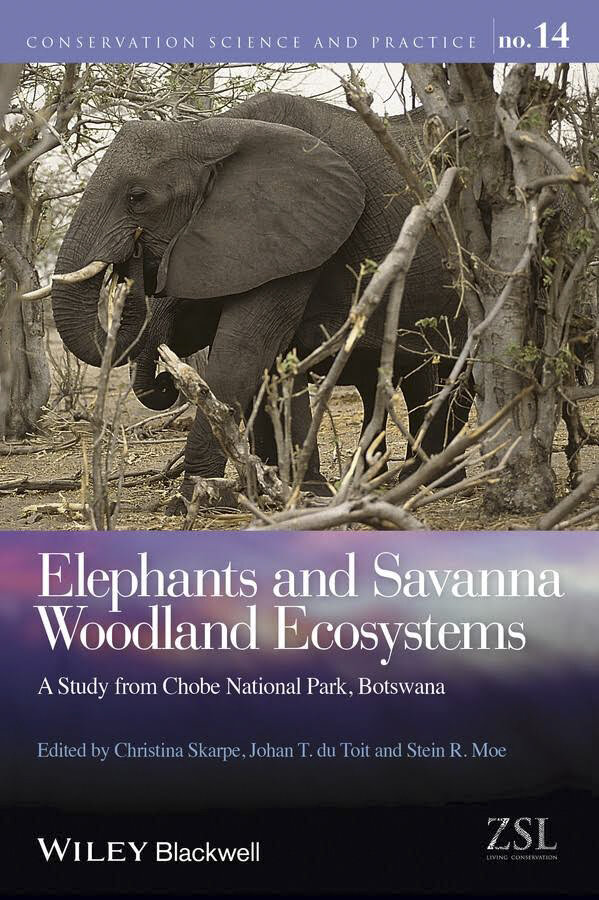Background
In the beginning of the 19th century elephants where almost extinct in Botswana due to extensive ivory hunting during the 18th century. The elephant population in Botswana has now recovered.
Northern Botswana is one of the strongholds for the African Savanna Elephant with a population of more than 100 000 individuals. The increasing population of elephants has affected the ecosystem in Northern Botswana, particularly close to perennial river systems. In some areas elephants have changed vegetation considerably, implicating changes in the composition and diversity of other mammals. These changes have raised some concern from management.
Current activities
Currently we are working in Makadikadi Basin together with the NGO Elephants for Africa (https://www.elephantsforafrica.org/).
We are studying the feeding ecology of elephants in this area.
Participants
Results
We have shown that elephants are important for the structure and function of these ecosystems and that many species of animals and plants do benefit from the return of the megaherbivores.
Book: Elephants and Savanna Woodland Ecosystems
Elephants and Savanna Woodland Ecosystems: A Study from Chobe National Park, Botswana
Edited by: Christina Skarpe, Johan T. du Toit, Stein R. Moe
During the nineteenth century, ivory hunting caused a substantial decrease of elephant numbers in southern Africa. Soon after that, populations of many other large and medium-sized herbivores went into steep decline due to the rinderpest pandemic in the 1890s. These two events provided an opportunity for woodland establishment in areas previously intensively utilized by elephants and other herbivores. The return of elephants to currently protected areas of their former range has greatly influenced vegetation locally and the resulting potential negative effects on biodiversity are causing concern among stakeholders, managers, and scientists.

This book focuses on the ecological effects of the increasing elephant population in northern Botswana, presenting the importance of the elephants for the heterogeneity of the system, and showing that elephant ecology involves much wider spatiotemporal scales than was previously thought. Drawing on the results of their research, the authors discuss elephant-caused effects on vegetation in nutrient-rich and nutrient-poor savannas, and the potential competition between elephants on the one hand and browsers and mixed feeders on the other.
Ultimately this text provides a comprehensive review of ecological processes in African savannas, covering long-term ecosystem changes and human-wildlife conflicts. It summarises new knowledge on the ecology of the sub-humid African savanna ecosystems to advance the general functional understanding of savanna ecosystems across moisture and nutrient gradients.
Read more about the book on the publisher's home page here (external site).
Publications
Elephant (Loxodonta africana) disturbance to riparian woodland: Effects on tree-species richness, diversity and functional redundancy.
Rutina, L.P. and S.R. Moe
14 Aug 2014
Fire and Grazing Change Herbaceous Species Composition and Reduce Beta Diversity in the Kalahari Sand System.
Masunga, G.S., S.R. Moe and B. Pelekekae
09 Nov 2012
What controls woodland regeneration after elephants have killed the big trees?
Moe, S.R., Rutina, L.P., H. Hytteborn and J.T. duToitMasunga, G.S., S.R. Moe and B. Pelekekae
14 Jan 2009
Trade-off between resource seasonality and predation risk explain reproductive chronology in impala (Aepyceros melampus).
Moe, S.R., L.P. Rutina and J.T. du Toit
15 Sept 2007
Elephant Loxodonta africana–driven woodland conversion to shrubland improves dry-season browse availability for impalas (Aepyceros melampus)
Rutina, L. P., S.R. Moe and J.E. Swenson
15 Sept 2005
Return of the Giants: Ecological Effects of an Increasing Elephant Population
Skarpe, C. et al.
15 Aug 2004
Links between terrain characteristics and forage patterns of elephants (Loxodonta africana) in northern Botswana.
Nellemann, C., S.R. Moe and L.P. Rutina
15 Nov 2002
Vegetation changes during a 36-year period in northern Chobe National Park, Botswana.
Mosugelo, D.K., S.R. Moe, S. Ringrose and C. Nellemann
15 Aug 2002
Relative capture efficiency of small, medium and large Sherman live traps for small mammals in northern Botswana.
Sejoe, T.B., J.E. Swenson and S.R. Moe
15 Jan 2002
